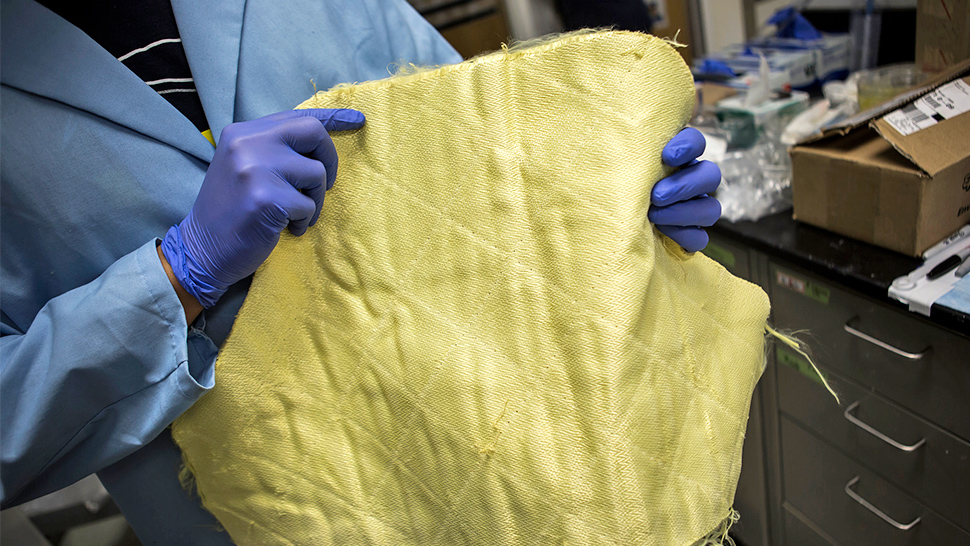
Battery fires and explosions are a much more prevalent issue than most may image, not only responsible for last year's Boeing 787 Dreamliner emergency landing, but for a myriad of house fires and injuries. Primarily responsible are the microscopic conductive pathways — called dendrites — that eventually grow inside the battery's inner structure and eventually cause a short circuit. But now, the joint mental prowess of University of Michigan professor Nicholas Kotov and PhD student Sin On Tung may have devised a solution to the dendrite issue using the same compound used to stop bullets: Kevlar nanofibers.
Why do battery fires occurs?
Lithium-ion batteries generate current when passing lithium ions through specific circuit pathways between layers of electrodes sandwiched between an insulating membranes. This membrane prevents the ions from jumping directly between the electrodes and shorting them. In time, however, the lithium atoms may occasionally arrange themselves into the dendrites, which grow in a fern-manner, eventually puncturing the insulating membrane.
What do Kevlar nanofibers do?
Professor Kotov and PhD candidate Tung observed that the pores of the thin insulating sheets they created from the Kevlar nanofibers are far too small to allow the tips of the dendrites to poke through and make contact with the electrodes, although, individual lithium-ions can still squeeze through as needed.
In addition to being an excellent electrical insulator, Kevlar exhibits remarkable heat-resistant properties, making it ideal for use in batteries whose temperature tends to run hot. Moreover, the new Kevlar-based insulating material is so thin, that it allows a greater density of electrodes to be packed into the same battery, thereby increasing its energy output.
Are exploding batteries that much of a problem?
Absolutely! Not only did the National Transportation Safety Board (NTSB) rule lithium battery fires as the main culprit behind the grounding of Boeing's 50 state-of-art Dreamliners back in 2013, but current Li-ion battery packs pose as much of a concern to power tools and electric vehicles as well. The packs themselves may be durable and built to withstand the impact of dropping or crashing, but the cells within are not. In the event that the shields fail, the cells inside can explode.
What does this mean us?
If battery manufacturers adopt Kevlar-based insulation, then they'll be able to produce thinner, more energy-efficient batteries, which in turn spark thinner and more compact consumer electronics that don't mysteriously swell or explode.
Source: Michigan University via Gizmodo
Advertisement
Learn more about Electronic Products Magazine





